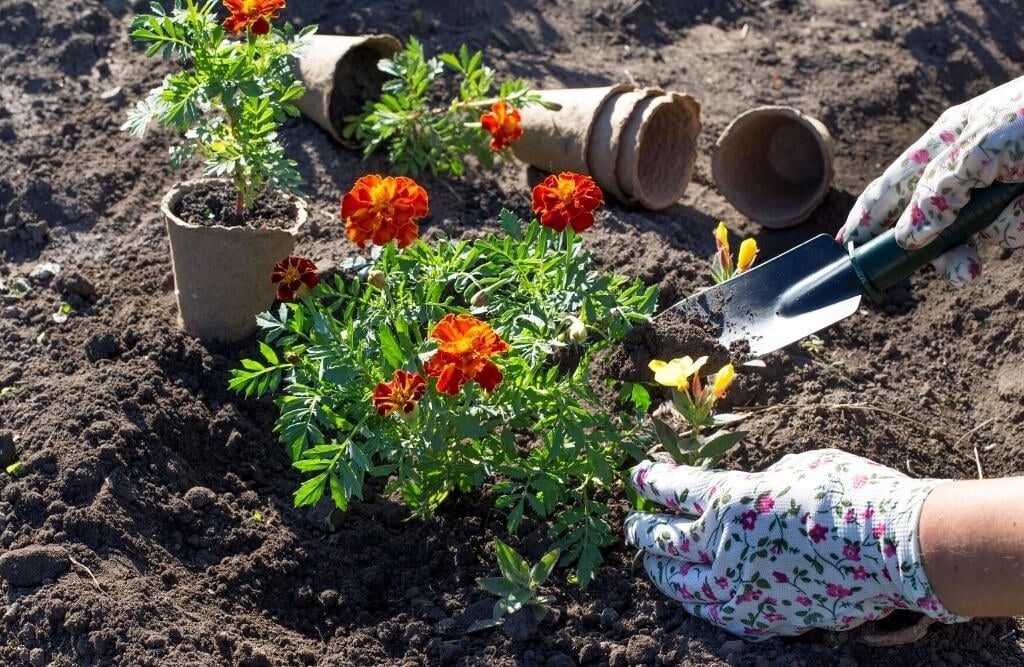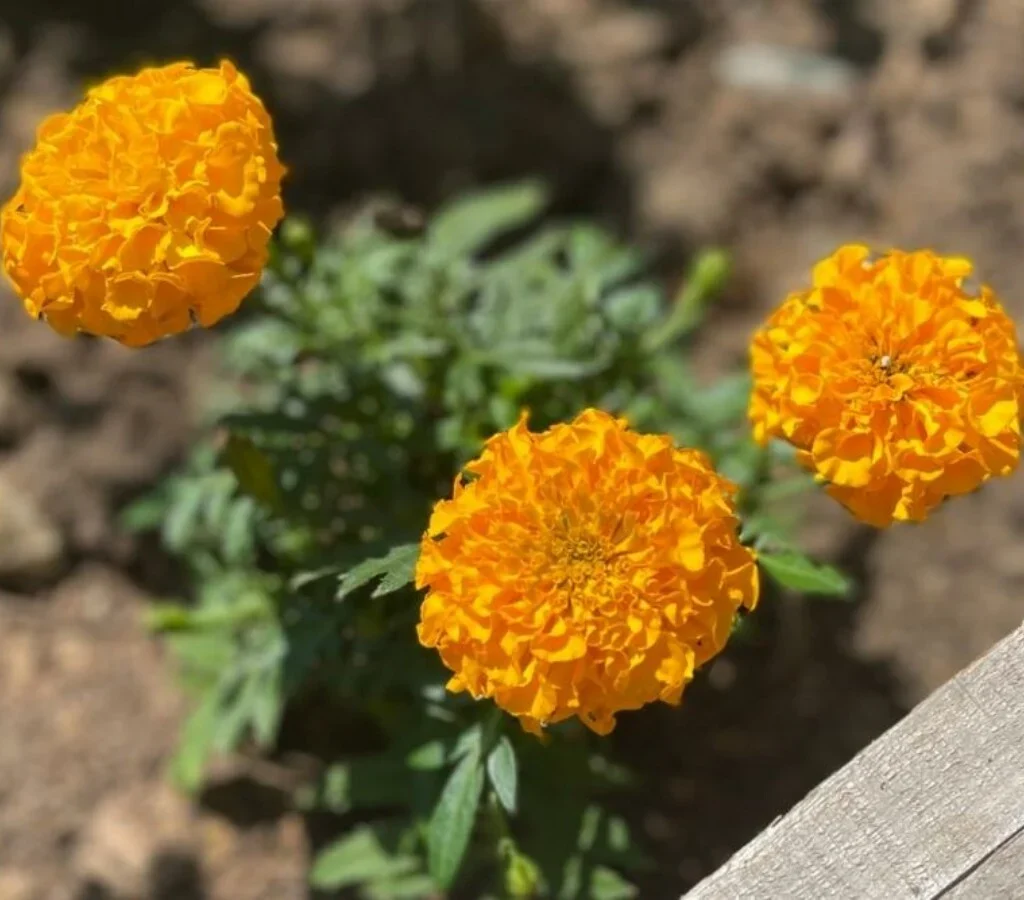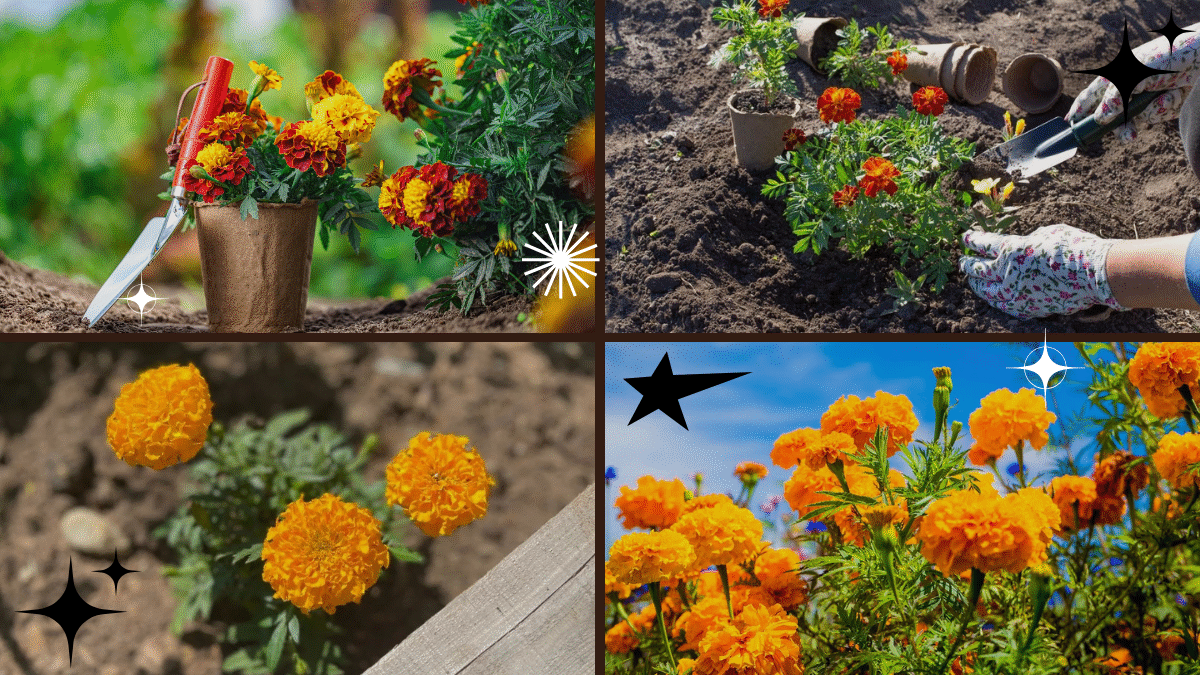When it comes to adding a burst of cheerful color to your garden, few flowers can rival the marigold. With their fiery hues of gold, orange, and red, marigolds are a gardener’s favorite for brightening borders, containers, and vegetable patches. Not only are they easy to grow, but they also serve a practical purpose — repelling pests and attracting pollinators.
Whether you’re a beginner gardener or an experienced green thumb looking to refresh your space, this guide will show you exactly how to plant marigolds for the healthiest blooms and the most vibrant color displays. Let’s dig in!

Why Plant Marigolds?
Marigolds (genus Tagetes) are hardy annuals known for their dazzling flowers and ease of care. They offer several advantages:
- Bright, long-lasting blooms from early summer to the first frost.
- Pest deterrent qualities, particularly against aphids, nematodes, and mosquitoes.
- Pollinator-friendly, attracting bees, butterflies, and beneficial insects.
- Excellent for companion planting in vegetable gardens.
- Ideal for borders, edging, containers, and window boxes.

Types of Marigolds You Can Grow
There are several popular types of marigolds to choose from, each with its own charm:
African Marigolds (Tagetes erecta)
- Tallest variety, growing up to 3 feet.
- Large, globe-like blooms in shades of yellow, orange, and gold.
- Best for garden beds and large containers.
French Marigolds (Tagetes patula)
- Compact and bushy, typically 6 to 12 inches tall.
- Frilly, bicolor flowers in warm tones.
- Perfect for borders, edging, and mixed containers.
Signet Marigolds (Tagetes tenuifolia)
- Small, dainty flowers with lacy foliage.
- Edible blooms with a mild, citrusy flavor.
- Great for herb gardens and window boxes.

When to Plant Marigolds
Marigolds love warmth and sunshine. The ideal planting time is in spring after the last frost date in your region. You can either:
- Start seeds indoors 6–8 weeks before the last frost.
- Sow seeds directly outdoors once the soil warms to at least 60°F (16°C).
- Plant nursery-bought seedlings once nights stay consistently above 50°F (10°C).

Choosing the Right Spot
Marigolds thrive in full sun and prefer well-draining soil. Pick a sunny spot in your garden where plants will receive at least 6–8 hours of direct sunlight daily.
Soil tip: While marigolds tolerate average soil, they flourish in moderately fertile, slightly acidic to neutral soil with a pH of 6.0–7.0.
How to Plant Marigold Seeds
Preparing the Soil
- Loosen the soil to a depth of 6–8 inches.
- Mix in compost or well-rotted manure to enrich the soil.
- Rake smooth and remove debris or stones.
Sowing the Seeds
- Sow seeds 1/4 inch deep and cover lightly with soil.
- Space seeds 6–8 inches apart for French marigolds and 10–12 inches for African marigolds.
- Water gently to settle the soil.
Germination
Seeds typically germinate within 5–7 days in warm soil. Keep the soil slightly moist but not soggy during this period.
Planting Marigold Seedlings
If starting with young plants from a nursery:
- Dig holes slightly larger than the root ball.
- Space them according to their type:
- French marigolds: 6–9 inches apart.
- African marigolds: 12–18 inches apart.
- Gently remove the seedling from its container.
- Place it in the hole at the same depth it was growing previously.
- Backfill with soil, firm gently, and water well.
Caring for Marigolds
Marigolds are wonderfully low-maintenance, but a little care ensures lush, healthy blooms.
Watering
- Water newly planted seeds and seedlings regularly until established.
- Once mature, marigolds are drought-tolerant.
- Water deeply when the top inch of soil feels dry.
- Avoid overhead watering to prevent fungal diseases.
Fertilizing
Marigolds don’t require much feeding. Over-fertilizing leads to lush foliage with fewer flowers.
- Before planting, enrich the soil with compost.
- Optionally, feed with a balanced, diluted fertilizer every 4–6 weeks during the growing season.
Deadheading
Regularly remove spent flowers to encourage continuous blooming. This simple task keeps plants looking tidy and promotes new buds.
Mulching
Apply a layer of organic mulch around marigolds to:
- Retain soil moisture.
- Suppress weeds.
- Keep soil temperatures consistent.
Common Pests and Problems
While marigolds deter many pests, they can occasionally face issues like:
| Problem | Cause | Solution |
|---|---|---|
| Powdery mildew | High humidity/poor airflow | Space plants properly; water at soil level |
| Aphids | Sap-sucking insects | Spray with insecticidal soap or strong water jet |
| Slugs and snails | Damp environments | Use organic slug bait or copper tape |
Companion Planting with Marigolds
Marigolds are fantastic companions for many garden vegetables. Their strong scent deters harmful insects and attracts pollinators.
Best companions include:
- Tomatoes
- Peppers
- Cucumbers
- Squash
- Beans
- Cabbage family plants
Avoid planting marigolds near legumes like peas, as it can inhibit their growth.
Harvesting Marigold Seeds for Next Season
One of the joys of growing marigolds is collecting your own seeds for future planting.
How to Collect Seeds:
- Allow some flowers to fade and dry naturally on the plant.
- Once seed heads turn brown and papery, snip them off.
- Break open the dried heads and collect the slender black seeds.
- Store in a paper envelope or glass jar in a cool, dry place.
This not only saves money but also ensures a continuous display of color year after year.
Fun Facts About Marigolds
- In Mexican culture, marigolds are known as cempasúchil and play a central role in Día de los Muertos (Day of the Dead) celebrations.
- The ancient Greeks and Romans valued marigolds for their medicinal properties.
- Marigold petals are edible and can add color to salads and desserts.
- Marigolds have been used historically as natural fabric dyes.
Final Thoughts
With their vibrant hues, pest-fighting powers, and cheerful personality, marigolds are a must-have for every garden. Whether you plant them as a decorative border, in a container on your patio, or among your vegetables, they promise to brighten your outdoor space from summer to fall.
Plus, with minimal care and a little attention, marigolds will reward you with an abundance of sunny blooms and the satisfaction of growing one of gardening’s most enduring favorites.
So grab those seeds or seedlings, prepare your garden bed, and get ready to fill your world with radiant color and life!





Leave A Comment